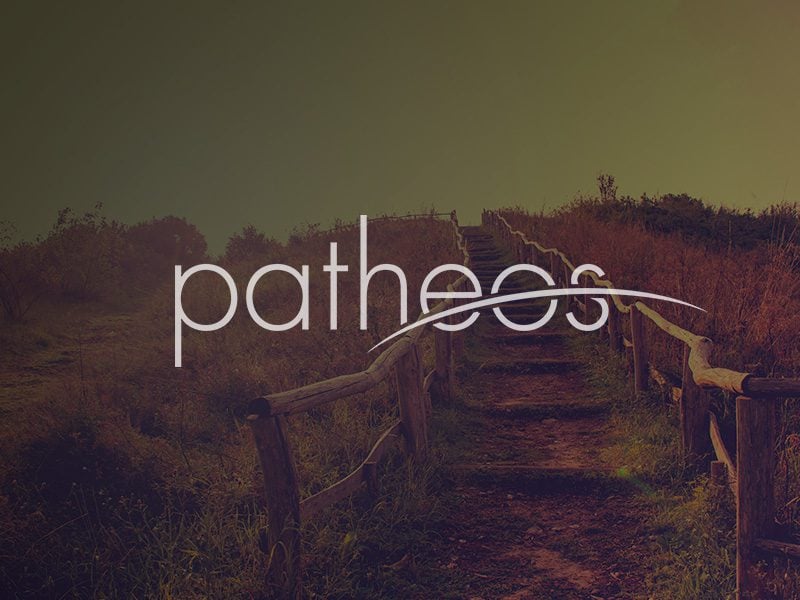
I’m currently in the process of trying to put together an introduction to a historical reading of the second traditional division of the Hebrew Bible, the Nevi’im or “Prophets.” This collection not only includes books like Isaiah, Jeremiah, and Ezekiel (the Major Prophets), it also includes “historical” works such as Joshua, Judges, Samuel, and Kings. I place the term historical in quotes because while I believe that “historical” works as a helpful literary genre, these books do not contain “history” as we use the term.
The Bible may be a lot of things, but it’s not a history book.
When people are first exposed to a historical critical reading of the Bible, especially one that directly counters their traditional religious assumptions, it’s common for such individuals to respond by saying, “Well, there’s just so much that we don’t know about the past.” And this is certainly true. But even though there is much that we don’t know, this doesn’t mean that we don’t know anything. To quote the authors of the recent Oxford University Press work, The Bible and the Believer: How to Read the Bible Critically and Religiously,
“Historical critics of the Bible argue that we know enough about the world and languages of the Bible (and we hope to know more in the future) that we can offer reasonable and compelling explanations of an author’s meaning or a text’s function in the original context, and, on that basis, we can certainly disqualify some interpretations of a text as anachronistic, fanciful, and therefore, impossible. We may use corroborating evidence from antiquity to see if certain models that we propose are reasonable” (p. 6).
When it comes to the Bible, one thing is quite certain: Moses did not write the Pentateuch (the books of Genesis through Deuteronomy). Not only does Genesis, for example, contain duplicate stories (two versions of creation, two versions of the ark, two versions of Joseph being sold into Egypt, etc.), Genesis features literary seams that reveal the locations where originally distinct stories were later joined together. These are separate literary traditions concerning the past produced by Judean and Israelite scribes.
The five books of Moses, in fact, don’t even claim that Moses himself is their author. The historical evidence suggests that a knowledge that the Pentateuch was a composite work representing separate scribal traditions was lost shortly after an editor combined the work into a single document, i.e. the Torah. References appear in the Pentateuch to the idea that Moses stayed on Mount Sinai in the presence of God for forty days and forty nights (Ex. 24:18, 34:28; Deut. 9:9, 10:10). Later Jewish interpreters eventually came to the conclusion that this was too long of a period for Moses to have only received the laws that the texts themselves identify as the revelation he received. Surely, they reasoned, in 40 days time, Moses must have been given a lot more.
Traditions, therefore, developed in early Judaism that Moses received not just that specific material, but also the entire written Pentateuch, Genesis through Deuteronomy. Eventually, Jewish rabbis even expanded this view to include the entire oral tradition that provided an authoritative interpretation of the written law. This is the traditional model that later religious traditions have inherited. But it is not historically correct.
Most contemporary biblical scholars believe that the Pentateuch began to take its preliminary shape in Jerusalem sometime during the late eighth century B.C.E. (800-701). In his most recent assessment of this process, David Carr presents the issue in this way, “though there were potential early cores behind separate Pentateuchal traditions, such as the ancestral or Exodus-Moses traditions, most specialists in the study of the Pentateuch now think that the first proto-Pentateuchal narrative, one extending from creation to Moses, dated to the exile at the earliest.”
David M. Carr, The Formation of the Hebrew Bible: A New Reconstruction (New York: Oxford University Press, 2011), 359.
After the creation of the Pentateuch, the “law of Moses” became the “Law of Moses,” or in other words, the Torah, the first five-books. As historians, we can witness this change taking place through a careful reading of post-exilic books that appear in the Bible. This is especially true of Chronicles, a literary work written after the Jewish exile into Babylon, and, therefore, the creation of the Torah (again, the first five books of “Moses”).
As I’ve discussed in several recent posts, the Chronicler was not creating “history” as we know it. He was creating a fanciful literary portrayal of the past that reflected his theology. And his theology was VERY different from that which appears in his earlier sources. For example, even though the legal material in Exodus and Deuteronomy was composed by separate scribes with contradictory perspectives, by the time these sources reached the Chronicler, he viewed them as a single authoritative tradition that needed to be harmonized.
Deuteronomy, for example, contains legislation commanding the Israelite community to boil the Passover sacrifice in water: “You shall boil and eat [the paschal offering] at the place that the LORD your God will choose” (16:7).
But the Priestly legislation in Exodus features an entirely different command: “they shall eat [the paschal offering] roasted over fire. . . Do not eat any of it raw, or boiled in any way with water, but roasted—head, legs, and entrails—over fire” (Exod. 12:8-9).
Since the Chronicler viewed both of these scribal documents as inspired Torah, he had to get really creative in his “historical” account of the Passover meal celebrated by the Judean king Josiah. So his story reads, “they boiled the Passover sacrifice in fire, as prescribed” (2 Chron. 35:13). But of course boiling in “fire” (rather than “water”) makes little sense, unless of course, you’re attempting to harmonize two separate scribal traditions, one that commanded to boil the offering in water, and the other to roast it in fire.
As explained by David Rothstein in the Jewish Study Bible, “Chronicles’ formulation reflects a bold step: Chronicles has changed the simple, straightforward meaning of Deuteronomy and, moreover, his interpretation creates a heretofore nonexistent accompanying sacrifice” (p. 1822).
So this is what is happening in Chronicles. The author is changing, and updating the past to match his religious world-view. Now, that’s great theology, but it’s terrible history.
And this observation makes sense with the historical evidence we see for the actual development of the Pentateuch. By the time of the Chronicler, the “law of Moses” had become the “Law of Moses.” Thus, instead of writing “history,” the Chronicler was creating a new version of Israel’s past in accordance with his view of the Torah as the Law given Israel by Moses, the prophet.
This explains why Chronicles often changes the narrative told in Samuel and Kings. The authors of these earlier sources did not have a combined Pentateuch to guide their “history.” When the Chronicler tells their same story, he intentionally updates these earlier literary works to reflect a later understanding of the Torah.
A great example of this can be seen in 1 Kings 8:25 where Solomon prays:
“And now, O LORD God of Israel, keep the further promise that You made to Your servant my father David: ‘Your line on the throne of Israel shall never end, if only your descendants will look to their way and walk before Me as you have walked before Me.”
In this passage, the idea of faithfulness to God appears expressed through the phrase “walk[ing] before Me.”
But that’s not the way this passage appears in Chronicles.
Scholars can identify an editor’s agenda by looking at the way he changes his received tradition (this is especially true in the New Testament Gospels of Matthew and Luke, which cite and often alter the earlier Gospel of Mark). We refer to this type of analysis as “Redaction Criticism” (since the term “redactor” means “editor”).
When the Chronicler takes this passage from Kings and places it into his new story about the past, the author makes a fascinating change that accords with his new view of Torah as the combined “Law of Moses”:
“And now, O LORD God of Israel, keep that promise that You made to Your servant, my father David, ‘You shall never lack a descendant in My sight sitting on the throne of Israel if only your children will look to their way and walk in the [path] of My Torah as you have walked before Me.”
And with this modification, the Chronicler reveals his new agenda. He alters the earlier expression in Kings “walk before Me” to “walk in the [path] of my Torah.” The “Torah of Moses” did not exist for the author of Kings. But it did for the Chronicler (the same source that as we’ve seen, finds creative ways to harmonize separate legal traditions in the Pentateuchal sources).
There are many more examples of this updating and reformulating process in Chronicles that we could point to. They clearly show that Chronicles is not “history” as we know it, and that the account reflects a later historical view of the Law of Moses in ancient Judaism.
This is exciting. It’s fun to see the evidence that sustains a historical critical reading of the material in Pentateuch, and that’s precisely what post-exilic literary works such as Chronicles provides. We witness the way later biblical authors transformed earlier references to “the law of Moses” into the “Law of Moses.”
As Dr. Marc Brettler notes in his insightful contribution to The Bible and the Believer, it’s certainly not a coincidence that in late biblical texts such as Ezra-Nehemiah and Chronicles, we encounter the technical term torah “Law” or ha-torah, “the Law” in the singular, whereas in earlier historical sources from the separate Pentateuchal traditions, we see texts that refer to torot (torah in the plural) meaning “teachings”:
“These are the laws, rules, and torot that the LORD established, through Moses on Mount Sinai, between Himself and the Israelite people” (Lev. 26:46).
Eventually in Judaism (and by extension Christianity), the concept of torot “laws” given by Moses grew to become the torah “Law” given by Moses, from Genesis through Deuteronomy.
See Marc Zvi Brettler, “My Bible: A Jewish Perspective,” in The Bible and the Believer: How to Read the Bible Critically and Religiously (Oxford: Oxford University Press, 2012), 21-79.











